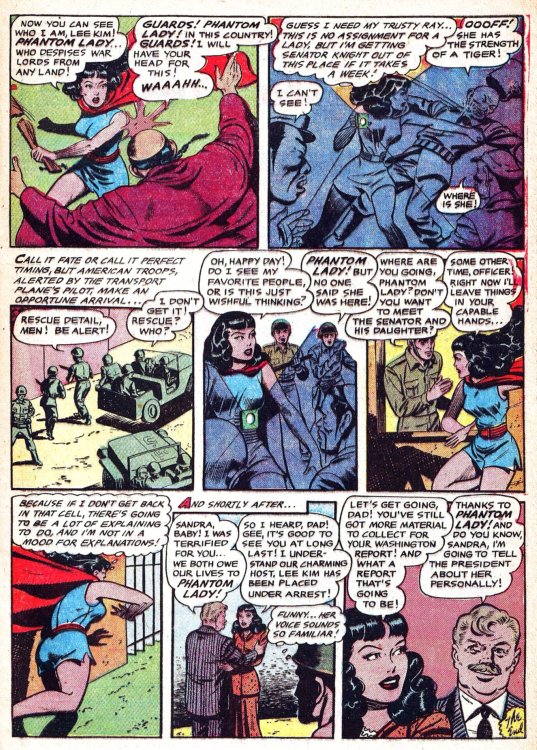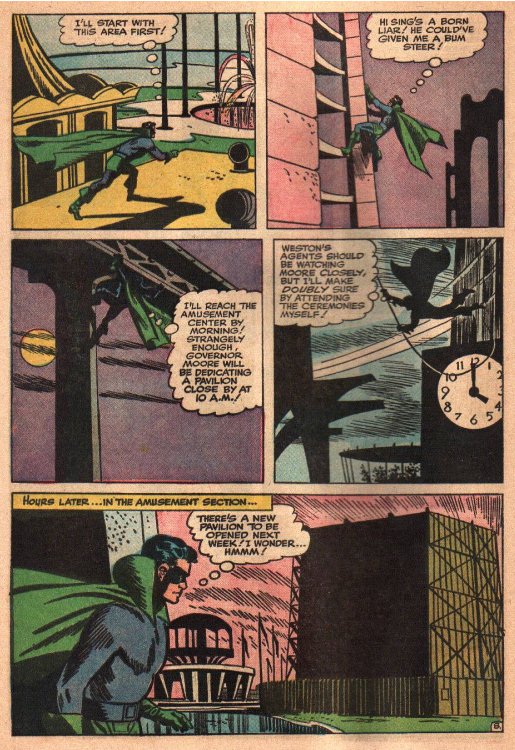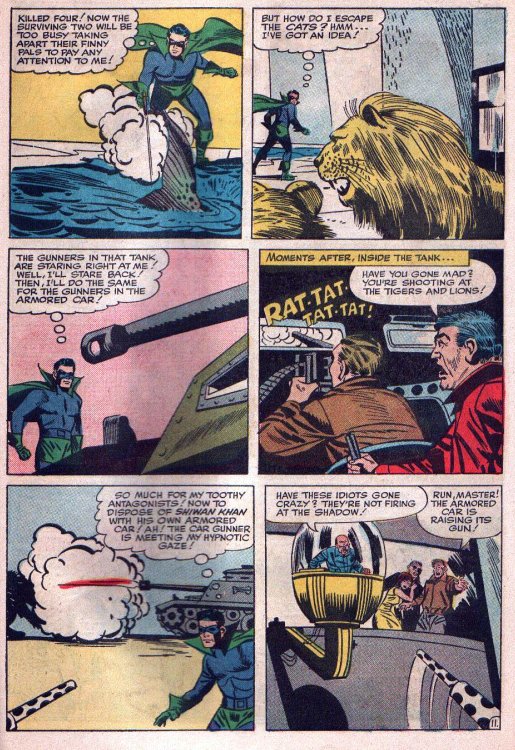Last time, we presented his final tale...
...now, from Mystery Men Comics #1 (1939), is the very first appearance of the decidedly-different Blue Beetle!
As you can see, it's not an origin story, since it's apparent that the Beetle's been operating for some time as of this tale.
(His origin won't be covered until the first issue of his own title, a year from now.
Even then, the full story won't be told.)
Also note the Green Hornet-inspired suit, fedora, and mask along with liberal use of a symbol to scare criminals and gas to knock them out.
It's the only time in his career he wears that particular ensemble.
With the next issue of Mystery Men Comics, you'll see the Blue Beetle begin the transition to the hero he was known as throughout the Golden Age as he dons the blue chain-mail costume.
(Oddly, when his origin is told in Blue Beetle #1, Garret is shown using the chain mail armor from the beginning of his career.)
Credited to the the pen-name "Charles Nicholas", this story was written by Will Eisner, illustrated by Charles Nicholas Wojtkoski, who later used the name for all his comic work until he retired.
(His origin won't be covered until the first issue of his own title, a year from now.
Even then, the full story won't be told.)
Also note the Green Hornet-inspired suit, fedora, and mask along with liberal use of a symbol to scare criminals and gas to knock them out.
It's the only time in his career he wears that particular ensemble.
With the next issue of Mystery Men Comics, you'll see the Blue Beetle begin the transition to the hero he was known as throughout the Golden Age as he dons the blue chain-mail costume.
(Oddly, when his origin is told in Blue Beetle #1, Garret is shown using the chain mail armor from the beginning of his career.)
Credited to the the pen-name "Charles Nicholas", this story was written by Will Eisner, illustrated by Charles Nicholas Wojtkoski, who later used the name for all his comic work until he retired.
Support Small Business!





















































